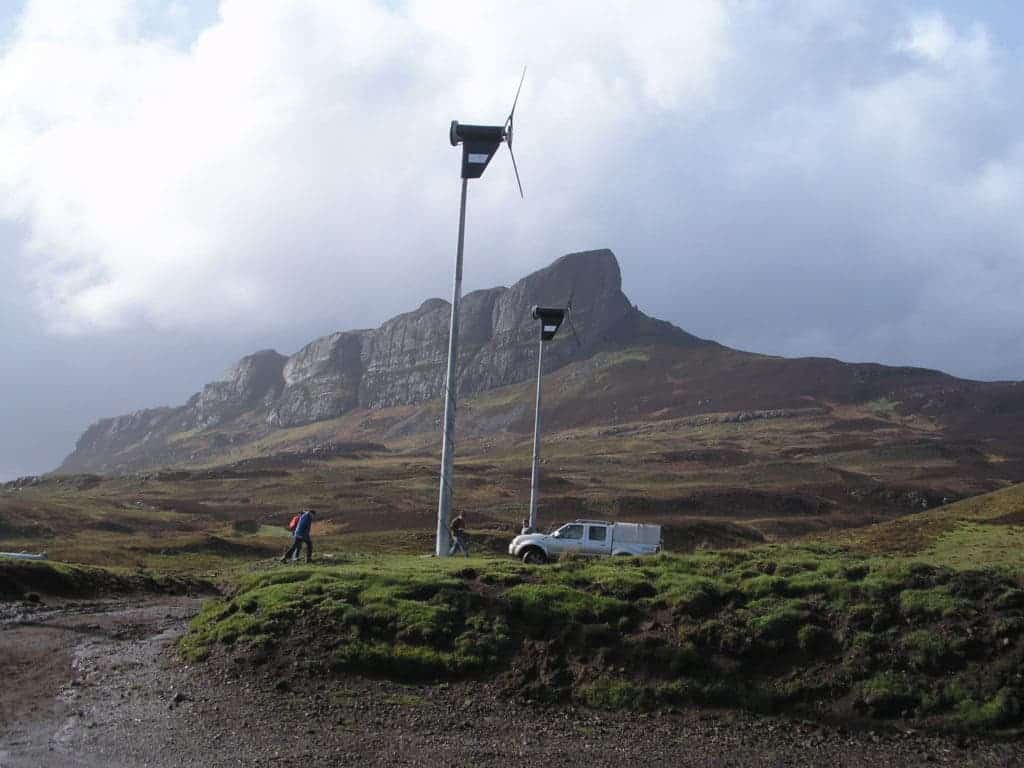The small island of Eigg measures 9 kilometers (5.6 mi) long from north to south and 5 kilometers (3.1 mi) east to west. The island powers itself 100% with renewable energy and may provide a glimpse into what the future of energy looks like.
Almost 20% of the world’s population (1.3 billion people) doesn’t have access to electricity. Most of them live in remote areas, without a solid infrastructure around them. It’s hard to get connected to the grid when a grid doesn’t exist, or when it exists but it’s not really functioning properly. This is why renewable energy can make such a big difference — it’s not just that it makes clean, cheap energy, but it also doesn’t need a huge national grid connected to major coal or gas plants. You can make due with solar panels or even tiny wind farms in an off-the-grid fashion — just like Eigg does.
In 2008, Eigg became the world’s first community to launch an off-grid electric system powered by wind, water, and solar, and they pretty much did it by themselves. Before this, they had to rely on noisy, inefficient, dirty diesel generators which only worked for a few hours a day. With the new renewable-powered grid, residents get 24-hour electricity for the first time in the island’s history. They have four wind turbines which feed up to 24 kW of energy into the grid. The solar panels catch every glimpsing solar ray, coming at a total of 50kW capacity. It might seem crazy to install solar panels in the Scottish Isles, and for most of the year, they don’t do that much. But come summer time, and solar panels do a lot more heavy lifting than you’d expect. They also have three hydro plants, a big one that can output up to 100 kW, and two smaller ones which output 5 and 6 kW respectively.
For the residents of Eigg, having this renewable energy system is a life changer. But this approach can inspire people worldwide, and is already doing that. Community Energy Malawi, a sister organization to Community Energy Scotland, sent representatives to Eigg to learn how they did it and implement the same approach in Malawi. To make things even more encouraging, the people of Eigg did all of this and operate the system without any technical background. In fact, there was no a single electrical engineer on the island, as the system’s designer John Booth, told the BBC.
“There was not one person on the island who could be described as an electrical engineer,” says Booth, a biochemist by training. “I just did my homework. Sometimes if a decision had to be made, I’d stay up all night working on it.”
But there is a catch: a big initial investment. In total, the system’s development cost £1.66m, most of which was funded by the European Union. But in countries not in the developed world, where such funding schemes aren’t available, this could be a deal breaker.
“That is the major challenge for any country,” says, Subhes Bhattacharyya of De Montfort University, who studied the issue, “especially in sub-Saharan Africa and southeast Asia, where most people lack access. They need initial support for capital funding.”
There are still times, especially during spring, when the weather isn’t cooperating at all and they still power up a few diesel generators — but 95% of the time, it’s all renewables. The opposite also happens sometimes, and they get more energy than they need. When that happens, the heaters in the community hall, pier lobby, and two churches automatically turn on, keeping these communal spaces heated at no extra cost.










